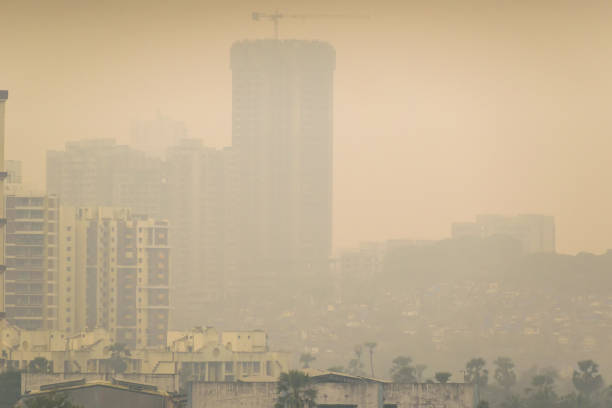New Report Highlights Air Quality Struggles in Pune, Mumbai, and Navi Mumbai

Pune, 22nd October 2024: Air pollution remains a significant concern in several of Maharashtra’s cities, including economic hubs like Mumbai, Pune, and Navi Mumbai, according to a recent report by Respirer Living Sciences Pvt. Ltd. The report, which analyzed data from the AtlasAQ Platform, assessed PM₂.₅ levels across major cities between 2019 and 2024. The findings highlight both improvements and ongoing challenges under India’s National Clean Air Programme (NCAP).
According to the report, 10 out of the 19 “non-attainment” cities in Maharashtra, which are targeted under the NCAP due to their poor air quality, have seen a rise in PM₂.₅ levels despite interventions. Cities such as Navi Mumbai, Aurangabad, and Jalna are still recording levels well above the safety thresholds. For instance, Navi Mumbai registered PM₂.₅ levels at 61.80 µg/m³ in 2023, significantly higher than the National Ambient Air Quality Standards (NAAQS) limit of 40 µg/m³ and the World Health Organization’s (WHO) guideline of 5 µg/m³. Other heavily polluted cities include Thane, Badlapur, Ulhasnagar, Chandrapur, Jalgaon, Nagpur, and Solapur.
Despite efforts to reduce particulate matter by 20-30% under the NCAP, these cities face persistent challenges, primarily due to industrial emissions, traffic congestion, and rapid urbanization. “The air quality crisis in Maharashtra is still critical. While measures have been put in place, many cities have yet to see significant progress,” said an expert from Respirer.
On the flip side, Mumbai and Nagpur have demonstrated improvements in air quality. The report showed that Mumbai’s PM₂.₅ levels dropped from 49.75 µg/m³ in 2023 to 28.82 µg/m³ in 2024, bringing the city closer to the NAAQS limits. Similarly, Nagpur saw its levels fall from 51.35 µg/m³ to 40.53 µg/m³ during the same period. These gains suggest that targeted interventions, such as better traffic management and stricter industrial regulations, are starting to have a positive impact in some areas.
“Maharashtra’s cities are at a critical juncture,” said Ronak Sutaria, CEO of Respirer. “While there are notable improvements, especially in cities like Mumbai and Nagpur, others continue to struggle. It is clear that pollution control efforts must be significantly enhanced if we are to meet the NCAP’s targets by 2026.”
The AtlasAQ Platform, which compiles data from Continuous Ambient Air Quality Monitoring Stations (CAAQMS), revealed that cities like Navi Mumbai and Aurangabad remain far above the national standards for air quality, underlining the urgent need for more stringent actions.
Professor S.N. Tripathi, a member of the NCAP Expert Committee and Dean at the Kotak School of Sustainability, IIT Kanpur, expressed his concern over the situation. “It’s concerning that several cities are showing little or no progress. If we consider the winter months, when pollution typically worsens, even the marginal improvements could disappear,” he remarked.
Professor Tripathi also emphasized the need for more proactive measures. “Despite the resources made available through NCAP and the 15th Finance Commission, many cities have yet to adopt advanced air quality management systems or deploy timely interventions. With only two years left to meet the 2026 targets, urgent action is required to improve air quality for the people of Maharashtra,” he added.
The report serves as a wake-up call, offering detailed insights into the state of air pollution in Maharashtra and urging policymakers to intensify their efforts to curb the growing crisis.






